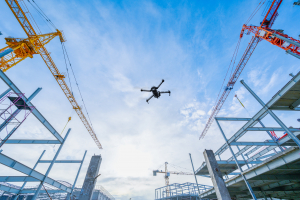Risk mitigation is a high priority when flying drones. Of course, when you put drones over critical assets that concern grows exponentially. With several techniques a trained remote pilot can reduce the chances of an incident significantly. From following pre-flight checklists, performing preventative maintenance and using certain flight techniques during missions it is possible to substantially increase safety during drone operations. The current safety checks within most industrial drones display battery health, system functionality and sensor status prior to flight. By reviewing the status before clearing for take-off a remote pilot can be more confident there will be no mechanical or electrical issues during flight.

The most significant factors during flight are alternating attention from ground control to visual contact with the aircraft, flying the drone in a way that maintains the pilot’s orientation, aborting each flight with spare power on board and having a goal for the mission and adhering to the flight plan without deviation. Utilizing an experienced visual observer during drone flights is also a factor in mitigating risk. From assistance with setting up equipment, preplanning and safety during the flights the visual observer brings another set of eyes to the job and may very well see something the pilot may overlook. As has proven true for decades with manned aircraft aeronautical decision making and experience with your equipment is also a significant factor in risk mitigation when piloting drones.
If you have any questions relating to risk assessment within your drone program please don’t hesitate to to reach out to us.

Author: Dan
Director of Industrial Services
Explore our page:
Drone as First Responder Series: Vol. 1
Propeller Heads Newsletter 05.04.21 – Insert Star Wars Reference